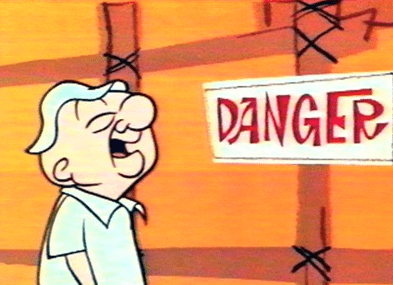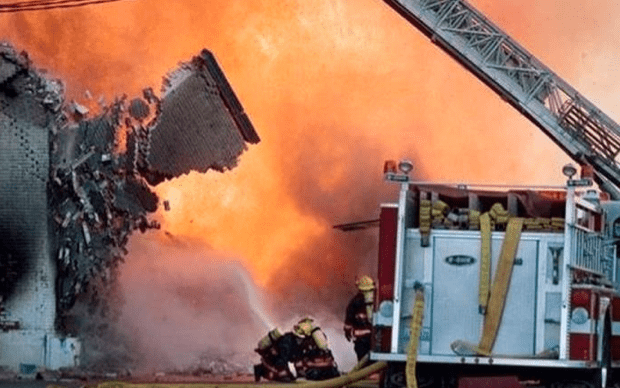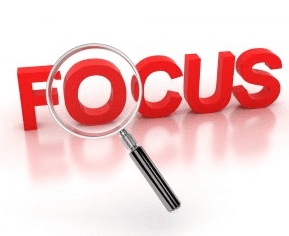 Every emergency scene operation should begin with determining the mission (sometimes called strategy) and setting task-level goals (sometimes called tactics). Strategy and tactics establish what is to be done and how it is to be done.
Every emergency scene operation should begin with determining the mission (sometimes called strategy) and setting task-level goals (sometimes called tactics). Strategy and tactics establish what is to be done and how it is to be done.
For example, at a structure fire, arriving responders are trained to conduct search and rescue operations and to extinguish the fire (stop the loss). Other tasks, such as ventilation, securing a water supply, shutting off utilities, assigning a rapid intervention team, salvage, overhaul, etc. support the overarching mission of saving lives and property.
However, a narrow focus on the mission can impact first responder safety. Let’s explore how mission myopia can impact situational awareness.
Mission Myopia
Mission: An important goal or purpose that is accomplished by strong conviction. A calling.
Myopia: Nearsightedness; a lack of imagination, foresight or intellectual insight. Shortsighted.
When putting these two terms together, you begin to understand that a person suffering from mission myopia is someone who is strongly committed to accomplishing a goal while, at the same time, may not be using foresight to look into the future to see the potential outcomes of their actions.
Imagination
 It is very interesting that the dictionary used the phrase “a lack of imagination” when defining myopia. While teaching the Mental Management of Emergencies class I share with attendees the need to have four skills to help make good decisions under stress. These include:
It is very interesting that the dictionary used the phrase “a lack of imagination” when defining myopia. While teaching the Mental Management of Emergencies class I share with attendees the need to have four skills to help make good decisions under stress. These include:
1. Situational Awareness
2. Tacit Knowledge
3. Imagination
4. Self-Efficacy (aka confidence)
Why would you need an imagination to make a good decision under stress? Because one component of developing and maintaining your situational awareness is having the ability to look into the future and to anticipate what will happen (before it happens). This requires, among other things, imagination because you have to look into a future that does not yet exist and, based in current information and drawing on past knowledge and experience, imagine what will happen.
Mission focused
 Some responders get so focused on the mission of search & rescue and fire extinguishment that they forget to take a moment and look into the future to see (imagine) the outcome. Or, if they do, they can only see (imagine) a good outcome based on the stored successes of past training and past experience.
Some responders get so focused on the mission of search & rescue and fire extinguishment that they forget to take a moment and look into the future to see (imagine) the outcome. Or, if they do, they can only see (imagine) a good outcome based on the stored successes of past training and past experience.
Think about how we train. When we light training fires, the students make entry with a hose line and they are always successful at putting the fire out. When we send firefighters in to conduct a search, they always find and extricate the rescue mannequin.
Training firefighters on how to perform search evolutions and fire attack is essential. However, training to perform these tasks in repetition at every training sessions – and allowing the crews to be successful at every attempt – may lead to mission myopia and, consequently, flawed situational awareness.
Chief Gasaway’s Advice
 When engaged in a high risk, high consequence activity begin with the end in mind. Ask yourself the following questions:
When engaged in a high risk, high consequence activity begin with the end in mind. Ask yourself the following questions:
1. What is our goal? ( What are we trying to accomplish?)
2. Do we have the right resources to accomplish the goal? (personnel and equipment)
3. How much time is it going to take to accomplish the goal? (Do we have that much time?)
4. How will we know if we are being successful? (How will we know if we are not being successful?)
5. At what point should we abandon the mission? (Change our course of action)
6. What will success look like? (What will failure look like?)
7. What are the realistic expectations (outcomes) from our actions?
As I evaluate casualty reports these are among the questions I ask – not to judge the responders – rather to understand their mindset. Why did they think their actions would result in good outcomes when, in fact, it appeared in many instances the odds were stacked against them from the start? Why were they trying to save the unsavable? Why did they take so much risk for so little potential gain?
While asking these questions in the context of a catastrophe, it certainly appears in many cases the responders were suffering from mission myopia. They were so focused on accomplishing the task that they failed to see the big picture and failed to anticipate the bad outcome that was on their horizon. To clarify, not all bad outcomes are predictable. However, when responders are trained to anticipate bad outcomes, the ability to imagine (and see in your mind’s eye) the potential of bad things coming, is improved.
One way to help responders anticipate bad outcomes is to take the lessons of casualty events and build them into current training. For example, take an instance where a responder was injured or killed by a downed power line that went unnoticed. Use a piece of cable or rope to recreate a similar circumstance. Simulate a power line down and teach responders to be observant for such hazards. If a responder comes in contact with the simulated line during the training exercise, they become a casualty. If this happens, don’t simply tap the victim on the shoulder and say “you’re dead.” The entire training exercise should follow the script for a firefighter down. Declare the mayday and have all the responders follow through on the actions they would perform, including extrication and treatment of the downed firefighter. Building realism (and emotion) into training evolutions helps improve recall of critical lessons under stress.
Action Items
 1. Discuss how to establish and communicate a mission (strategy) at emergency scenes that is outcomes-based (i.e., begins with the end in mind).
1. Discuss how to establish and communicate a mission (strategy) at emergency scenes that is outcomes-based (i.e., begins with the end in mind).
2. Discuss the dangers of mission myopia and share an example of where you have experienced it personally or have knowledge of it happening to someone else.
3. Discuss the steps you can take to avoid mission myopia, including what you and other members of your team can do to help each other avoid it.
4. Discuss how you can extricate yourself from a situation where mission myopia has caused you to get into a bad spot.
5. Discuss how you may be able to share concerns with supervisors/commanders who are giving orders that lead you to believe the supervisor/commander may be suffering from mission myopia.
Share your thoughts and ideas in the “Leave a Reply” box below.
___________________________________________________________
The mission of Situational Awareness Matters is simple: Help first responders see the bad things coming… in time to change the outcome.
Safety begins with SA!
___________________________________________________________
If you want to send me incident pictures, videos or have an idea you’d like me to research and write about, contact me. I really enjoy getting feedback and supportive messages from fellow first responders. It gives me the energy to work harder for you.
Thanks,
Email: Rich@SAMatters.com
Phone: 612-548-4424
www.RichGasaway.com (personal website)
Facebook Fan Page: www.facebook.com/SAMatters
LinkedIn: Rich Gasaway
Twitter: @RichGasaway
YouTube: SAMattersTV
iTunes: SAMatters

